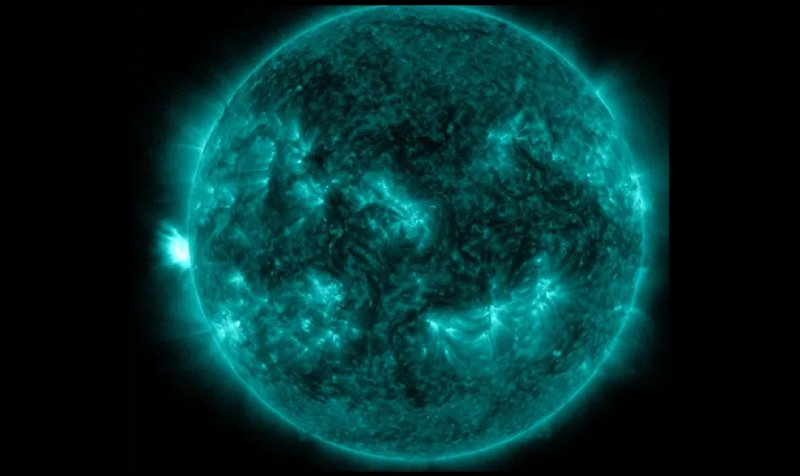
Mars Has Been Targeted By The Sun’s Huge Plasma Attack
- Science
- September 2, 2023
While the present surge in solar activity has had some observable consequences on Earth, it appears that Mars is currently feeling the effects the most—or would if it were inhabited. After the Perseverance rover discovered a big sunspot, a sizable coronal mass ejection is predicted to strike the Red Planet directly. The lack of a shielding magnetic field and the residual atmosphere will more than outweigh the fact that it is farther from the Sun than Earth, which won’t be much of a help if this happens.
Due to the absence of a strong magnetic field to direct charged particles from the Sun towards the poles, martian auroras differ from those on Earth. However, a variety of aurora have been observed, including one that spans the globe in half and has an unidentified cause. The Mars Atmosphere and Volatile Evolution (MAVEN) mission’s Imaging Ultraviolet Spectrograph (IUVS) has detected many of these auroras that would be invisible to human eyes.
On September 1, when a coronal mass ejection (CME) that left the Sun over the weekend is anticipated to strike, MAVEN and other orbiters will be keeping a keen eye out for similar events. The orbiting spacecraft will be looking for signs that the CME has taken away a little more of the Martian atmosphere, as it appears to have happened in combination with previous auroras, which has less aesthetic appeal but greater scientific significance. Events like these are probably a major factor in why Mars lost its atmosphere and, consequently, the conditions that permitted it to formerly have an ocean.
You’ll need a clear view of the west shortly after sunset if you want to find Mars right now in the sky. It is practically immediately opposite the side of the Sun that we see, which implies that it is almost entirely on the opposite side of the Sun from us.
This geometry allowed NASA to point Perseverance’s camera onto the Sun last week and detect a large sunspot that we otherwise would not have known about. Perseverance has seen sunspots before, but this one was so massive that by the time the Sun’s motion moved it Earthward, there was reason to believe major things were about to happen.
Although sunspots are the easiest element of solar activity to view, they are not particularly significant on their own. Much more significant are CMEs, which occur when pieces of the Sun’s magnetic field and plasma are expelled into space. Even while huge sunspots are frequently accompanied by CMEs, not all of them do.
However, on August 26, NASA discovered an M1 flare coming from a region of the Sun that was temporarily out of our line of sight but was likely to turn towards us. Perseverance asserts that the flare is not emanating from the previously noted large sunspot or any other that Perseverance can resolve because the region is sufficiently obscured for us to be unable to see the flare’s source.
Not every flare—like sunspots—produces a CME, and this one is believed to have just been an M1 class flare. The flare, though, lasted an abnormally long time, and it appears that as a result it caused a big CME that broke a lot of plasma free from the Sun’s gravity and launched it into space.
In certain cases, we can’t know until right before a CME whether it will strike a planet or pass it by, but in this case, a NASA model suggests Mars is in the firing line.
But there’s no reason to feel ignored. This weekend’s Earthly auroras may be possible thanks to another flare that occurred yesterday that may have generated an Earth-directed CME.